St George's School for Roman Catholic Boys, Freshfield, Formby, Lancashire
In 1922, the St George's School for Roman Catholic Boys relocated from its longstanding premises at 137A West Derby Road, Liverpool, to occupy the recently closed St Anne's Industrial School for Girls at West Lane, Freshfield, Formby. The new establishment was formally certified for operation on May 3rd, 1922, with accommodation for 150 boys.
The School site is shown on the 1927 map below.
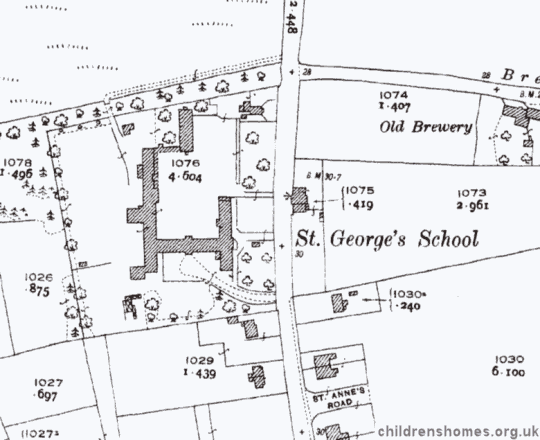
St George's School for Roman Catholic Boys site, Freshfield, Formby, c.1927.
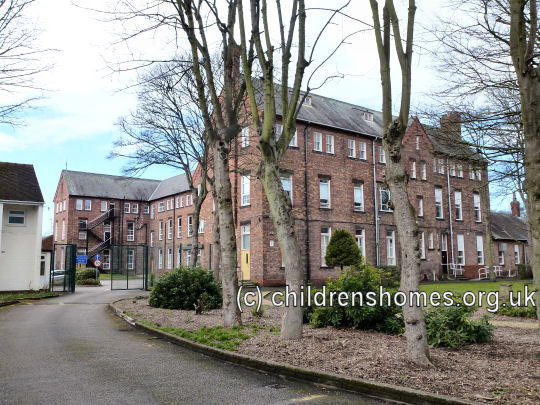
Former St George's Industrial School from the south-east, Freshfield, Formby, 2013. © Peter Higginbotham
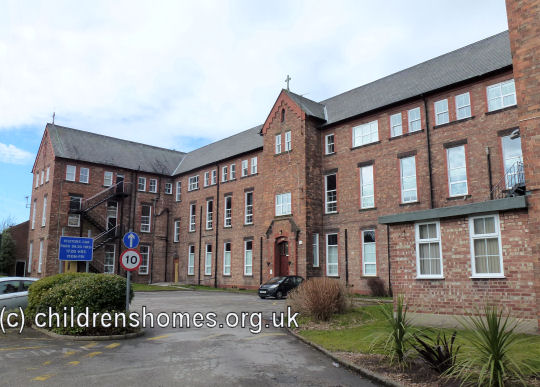
Former St George's Industrial School from the south-east, Freshfield, Formby, 2013. © Peter Higginbotham
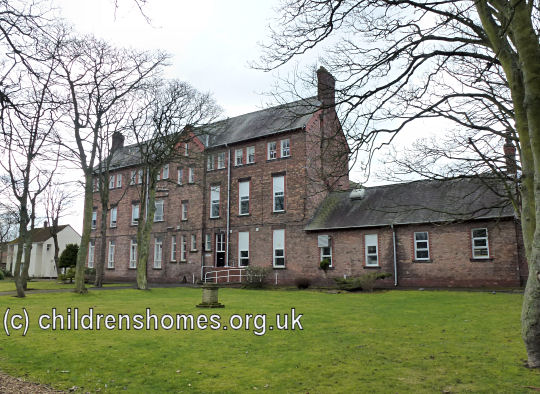
Former St George's Industrial School from the north-east, Freshfield, Formby, 2013. © Peter Higginbotham
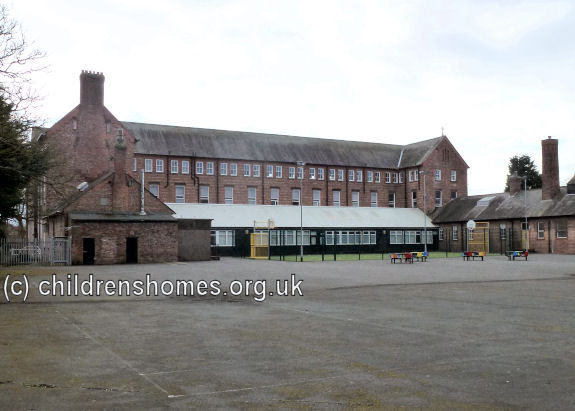
Former St George's Industrial School from the north, Freshfield, Formby, 2013. © Peter Higginbotham
Early in the morning of February 10th, 1931, a fire broke out at the School which at that time had 140 inmates. One of the boys, James Ferguson, aged 12, awoke and realised that the building was on fire. He roused James Spring, another 12-year-old boy, and told him to go along the corridor and wake up all the other boys, while he dashed out of the dormitory to warn the masters. Spring went from bed to bed and told the boys to get up quickly and wrap a blanket round them before leaving. Meanwhile, Ferguson warned the superintendent, Mr P.L. Kearney, who returned to the dormitory, while the boys, accompanied by Spring and Ferguson, calmly marched from the burning room and assembled outside the building. Mr Kearney, having ascertained that the boys were safe, telephoned for the fire brigade, who quickly had the outbreak under control.
In 1933, St George's became an Approved School, one of the new institutions introduced by the 1933 Children and Young Persons Act to replace the existing system of Reformatories and Industrial Schools. The School could then accommodate up to 150 Junior boys, aged under 13 at their date of admission.
In 1973, the School became a Community Home with Education (CHE) run in conjunction with Liverpool City Council.
The site is now home to Clarence High School which provides residential and day facilities for young people who experience social, emotional and behavioural difficulties.
Records
Note: many repositories impose a closure period of up to 100 years for records identifying individuals. Before travelling a long distance, always check that the records you want to consult will be available.
- Nugent Care, 99 Edge Lane, Liverpool L7 2PE.
- Liverpool Record Office and Local History Service, Central Library, William Brown Street, Liverpool L3 8EW. Now holds the Society's "historical" records and also those of the Catholic Emigration Association which emigrated children from the Society's establishments.
- The National Archives, Kew, Richmond, Surrey, TW9 4DU. Has various Inspection reports and other documents (some subject to 75 year closure).
Bibliography
- Higginbotham, Peter Children's Homes: A History of Institutional Care for Britain's Young (2017, Pen & Sword)
- Mahood, Linda Policing Gender, Class and Family: Britain, 1850-1940 (1995, Univeristy of Alberta Press)
- Prahms, Wendy Newcastle Ragged and Industrial School (2006, The History Press)
- Higginbotham, Peter Children's Homes: A History of Institutional Care for Britain's Young (2017, Pen & Sword)
- Hyland,Jim Yesterday's Answers: Yesterday's Answers: Development and Decline of Schools for Young Offenders (1993, Whiting and Birch)
- Millham, S, Bullock, R, and Cherrett, P After Grace — Teeth: a comparative study of the residential experience of boys in Approved Schools (1975, Chaucer Publishing)
Links
- Nugent Care (former Liverpool Catholic Children's Society).
- Clarence High School
- None noted at present.
Except where indicated, this page () © Peter Higginbotham. Contents may not be reproduced without permission.


